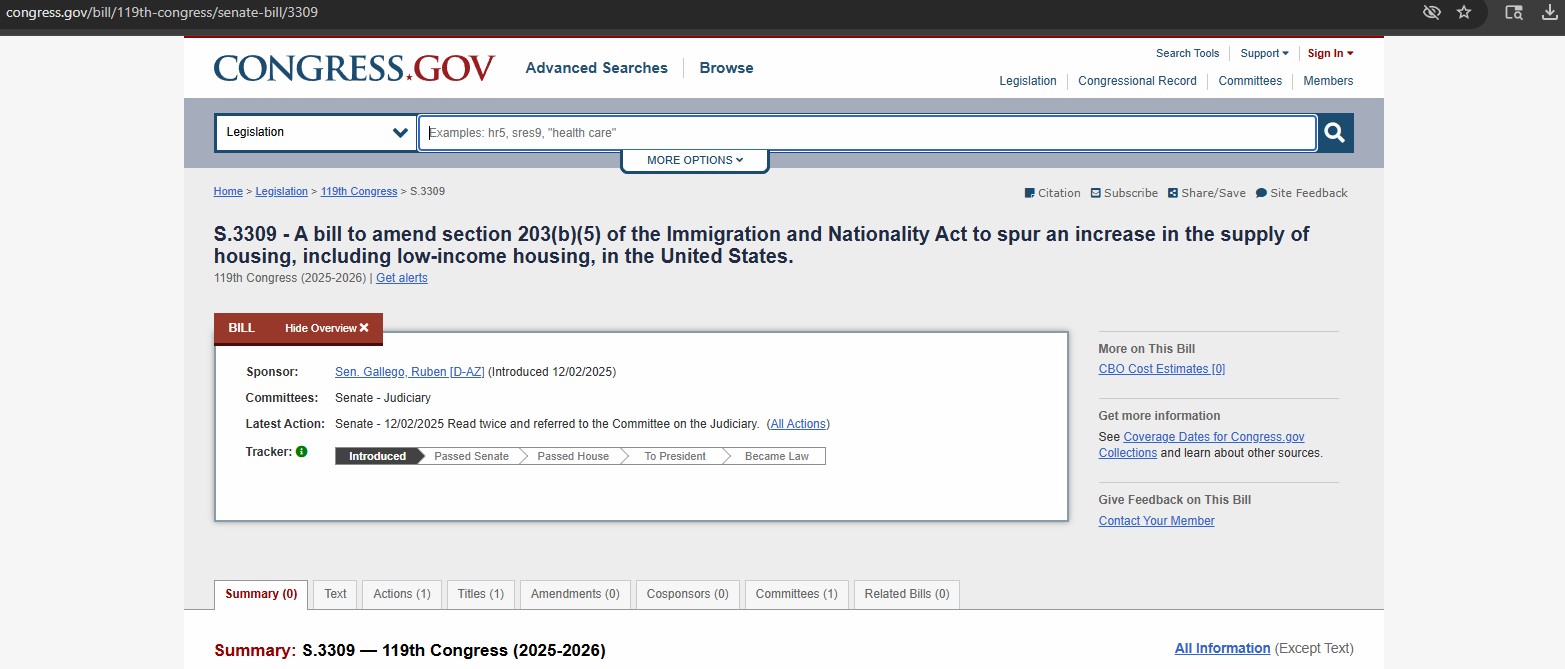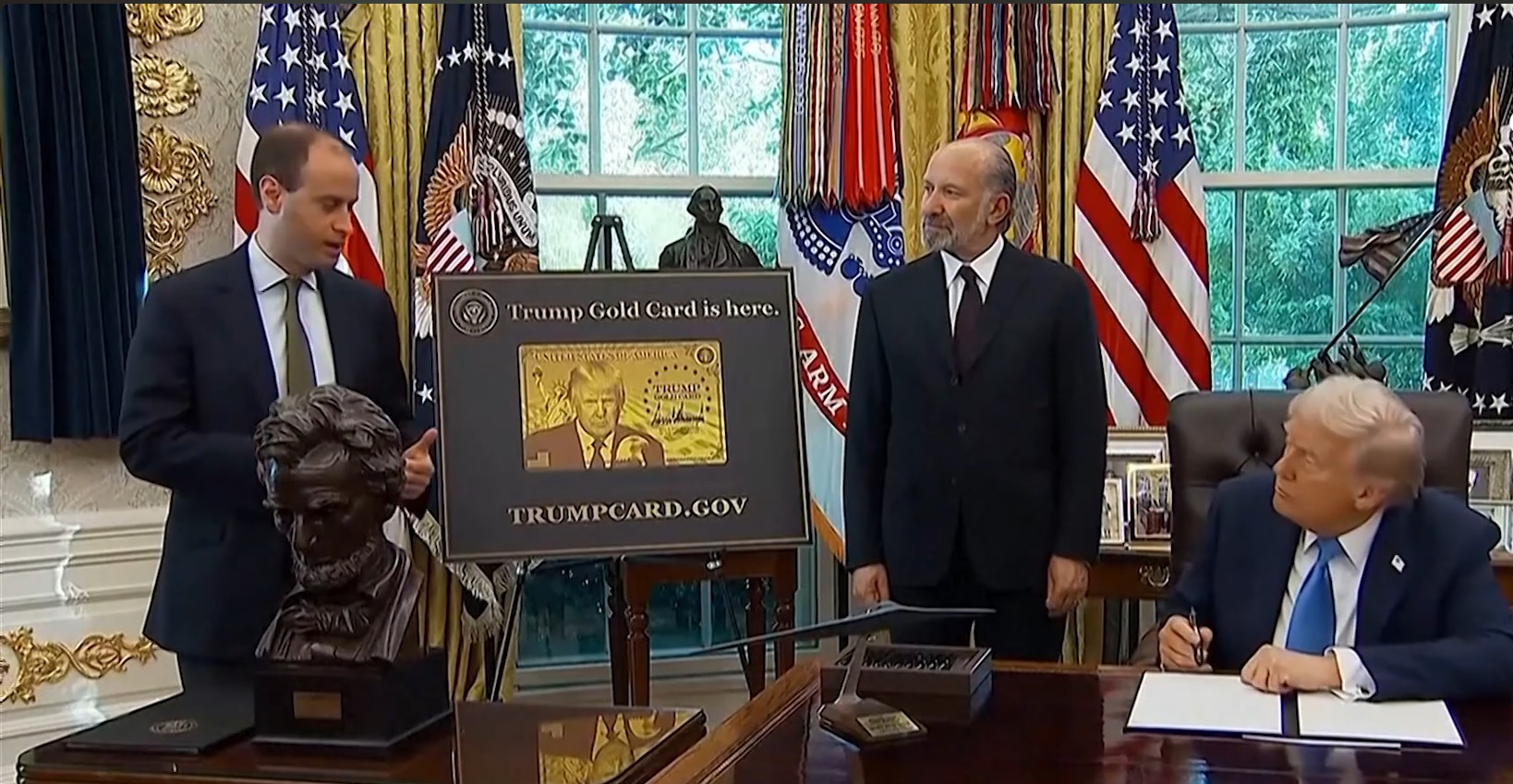Analysis of the IIUSA vs USCIS suit on EB-5 Sustainment Period (Part 2)
22nd May, 2024
Read part 2 of our two-part analysis on IIUSA's sustainment lawsuit complaint regarding why we believe their logic is faulty, and what we plan to do to make sure EB-5 investors' rights are protected in the process.

Background: IIUSA, an EB-5 regional center association, has filed a lawsuit against USCIS challenging the two-year sustainment period rules that currently apply to post-RIA investors. As mentioned in our first blog post regarding this issue, AIIA opposes this lawsuit as it will severely harm immigrants who invested after March 2022. This is the second post in our two-part blog series on this subject. We have launched a fundraiser to involve ourselves in this lawsuit in order to ensure investors’ voices are heard as this lawsuit proceeds.
To date, we have raised $23,919.96 of the $35,000 required, all within the past two weeks after our last blog was published. We are very grateful for the support we’ve received from the EB-5 investor community. We are especially grateful to the many industry professionals who have donated to this campaign. Now, we have to raise the remaining funds, so that we can begin our legal efforts as soon as possible.
The IIUSA lawsuit claims that it was USCIS, not Congress, who originated a two-year sustainment policy, and thus that policy should be subject to public notice, comment, and challenge. The IIUSA complaint implies that Congress never contemplated a two-year period (although Congress established EB-5 in 1990 with a two-year conditional residence period, and obviously did not mandate processing and visa delays to expand the EB-5 process far beyond that time). The IIUSA complaint goes on to simply ignore the fact that Congress used the EB-5 Reform and Integrity Act of 2022 (RIA) to amend the US Code, with Pub. L. 117–103 adding a two-year minimum investment period to 8 USC 1153 (b)(5)(A)(i), while deleting the language in 8 USC 1186b (b)(1)(B) and (d)(1)(A) that had required the investment period to extend through the conditional residence period.
The IIUSA lawsuit attempts to prevent or at least stall USCIS from implementing RIA’s change to the sustainment period for post-RIA investors. AIIA must fight this, because we recognize that RIA made an extremely important contribution to program integrity and investor protection when it defined a minimum two-year required investment period separate from the required two-year conditional residence period. This decoupling of the investment from the immigration process insulates investment risk from immigration risk. It separates investor exit timing from the fact that USCIS processing delays and visa availability delays can add years if not decades to the immigration process time. Without this change, post-RIA investors would face the same investment timing and redeployment nightmare as pre-RIA investors.
Our previous post in this series covers three of the main arguments presented by IIUSA in their complaint against USCIS.
4. “Two-Year Period Doesn’t Reflect Historical Practice and Other Economic Programs”
In its complaint, IIUSA states that “USCIS has long required investors to sustain their investment ‘over the two years of conditional residence.’ 8 C.F.R. § 216.6(c)(1)(iii). This longstanding rule has incentivized regional centers to invest in high-quality projects that are more likely to generate a return for investors, create the necessary number of jobs, and deliver benefits to the community at large.”
It is well known, by both EB-5 investors and stakeholders alike, that the returns on investment for EB-5 investors are significantly below market standards, on the premise that the investors are expected to receive permanent residency as a reward. Contrary to IIUSA’s argument — that the pre-RIA sustainment period incentivizes regional centers to seek out high-quality projects that create the necessary jobs and benefit the American economy — we have not seen any evidence to support IIUSA’s argument. We welcome IIUSA to put forth any studies that prove their assertion
Notably, USCIS’s current interpretation of the sustainment period does not preclude any regional center from seeking out high-quality longer-term projects and convincing investors of their merits. We believe that is a better approach, which preserves investor choice. Why not let the investors evaluate the quality of projects themselves? We should preserve a free market where projects with different business models, investment periods, and returns compete for investment. IIUSA’s position seems to protect weaker projects and regional centers from economic competition, which calls into question its concern for investors’ interests.
The “EB” in EB-5 stands for “Employment Based,” not “Investment Based.” The founding principle of EB-5 is to create jobs that benefit the U.S. economy in exchange for a permanent residency – it is neither about “buying a green card,” nor about boosting corporate profits or generating investment returns for a green card. All policies regarding the EB-5 program should align with that core employment-based principle. The investment period question cannot be considered in a vacuum.
In its complaint, IIUSA states that “USCIS did not address possible alternative implementations of the two-year sustainment requirement or consider the costs and benefits of its decision. The agency also failed to consider significant reliance interests and decades of contrary agency policy and industry practice.”
IIUSA is wrong. There are not decades of history of industry practice that relies on years-long sustainment and redeployment. As we have demonstrated in our redeployment blog, this problem only emerged in 2015, when excess demand from Chinese investors led to oversubscriptions of the visa category, leading to a backlog. From the beginning of the Regional Center program in 1993 through the next 22 years to 2015, the EB-5 program operated without any backlogs. Moreover, IIUSA has never actually described what it means by “significant reliance interests”. Given that regional centers have long used “bridge financing” and other non-EB-5 monies to fund a project, this weakens IIUSA’s claims that a two-year EB-5 investment term hurts the industry’s financing options. There is no evidence to suggest that a shorter investment period would jeopardize financing options for regional centers
As Suzanne Lazicki from Lucidtext noted, “If the EB-5 process functioned as Congress intended, then the EB-5 investor could complete the immigration process within three years of the time of investment… The visa application is delayed by nothing but USCIS/DOS capacity to move paperwork, schedule interviews, and approve adjustments, unless excess visa number demand forces visa number waits.” Therefore, what IIUSA refers to as historical practice is merely the result of an ill-functioning program, and not the program’s original intention.
IIUSA also claims that “[The longer] timeframe is consistent with other incentive-based economic development programs. Indeed, virtually all federal economic development programs that provide investor incentives have investment holding periods that are longer than two years. By way of example, to receive the maximum Opportunity Zone benefit, the necessary investment period is ten years, C.F.R. § 1.1400Z2(c)-1(b)(1)(i); for New Market Tax Credits, the necessary investment period is seven years, I.R.C. § 38(b)(13); for Qualified Small Business Stock treatment, at least a five-year investment is required, I.R.C. § 1202.”
EB-5, at its core, is an immigration program designed to create jobs, not an economic development program to capitalize investments for the benefit of Regional Centers. The programs that IIUSA cites are completely unrelated and do not serve as appropriate parallel examples. No matter how these other programs are implemented, they should not serve as a point of reference for how EB-5 should be regulated.
However, even if we did compare the Opportunity Zone program to the EB-5 program, these opportunities (sparing qualified small business stock treatment) require periods of five to seven years of investment. Additionally, these investment opportunities provide tax breaks for high-net-worth individuals looking for opportune investments in development projects across the U.S. EB-5 investors are not looking for tax breaks, nor are they afforded such privileges. EB-5 investors are not always high-net-worth individuals, contrary to the public’s common perception of the program. AIIA’s members include individuals mortgaging their houses, selling property, delaying much-needed employment opportunities, delaying medical treatments, and separating themselves from their children in order to obtain an EB-5 immigrant visa. These are the sacrifices they make to immigrate to the United States of America, the greatest country in the world, which is the common experience of every immigrant. They should receive our sympathy, and not be separated from their investment because of the Regional Centers’ self-interest.
Unfortunately, we have also witnessed investors forgoing their EB-5 investment and withdrawing from the program due to financial problems, long wait times, and retrogression. In our opinion, these practices – particularly retrogression – ultimately harm the EB-5 program and the U.S. economy by forcing investors to sustain their investments for longer periods of time.
5. “Two year sustainment will cause uncertain impact on project quality and job creation”
IIUSA argues that “USCIS’s interpretation will have perverse and destabilizing effects on the immigrant investor market. The existing regulation—that is, the longstanding policy that has governed the EB-5 program for decades—incentivizes regional centers to invest in longer-term, professionally managed, high-quality projects that are generally more likely to preserve investor capital and generate positive returns. USCIS’s action, by contrast, has resulted in a sharp and immediate—literally, overnight—plunge in demand for such projects as investors began to demand two-year projects. This result has directly harmed, and continues to harm, IIUSA members in the process of marketing hundreds of millions of dollars of longer-duration offerings in compliance with and reliance on USCIS’s prior sustainment rule, as well as those who have spent substantial time, money, and other resources negotiating and planning for new projects.”
First, we note that neither the revised law nor USCIS interpretation forbid long-term projects. Regional centers remain free to offer long-term projects, and investors remain free to select such projects based on their quality as investments.
The USCIS Q&A that IIUSA is litigating clearly recognizes that “The INA establishes only minimum required investment timeframes for purposes of applicable eligibility requirements and does not place any upward limit on how long an investor’s capital may be retained before being returned. Regional centers or their associated new commercial enterprises can negotiate longer periods of investment directly with their investors independently of EB-5 eligibility requirements.”
By reacting against this Q&A, the IIUSA complaint implies that regional centers fear negotiating, and doubt their ability to sell long-term projects on their quality. Apparently, IIUSA wishes that USCIS would just tell investors that they must choose long-term projects as an immigration necessity. Then regional centers need not convince investors that long-term projects have the highest quality and greatest ability to preserve investor capital and generate positive returns.
We believe that is a better approach. Why not let the investors evaluate the quality of projects themselves? In a free market economy, suboptimal products will inherently attract fewer consumers. We should preserve a free market where projects with different business models, investment periods, and returns compete for investment. IIUSA’s position seems to be to protect weaker projects and regional centers from economic competition, which calls into question its concern for investors’ interests.
IIUSA states that “The existing policy also advances manifest congressional objectives. High-quality projects with an investment horizon of at least five years, for example, generally result in greater economic growth and job creation than shorter-term projects. Achieving the ends of the EB-5 program is thus consistent with USCIS’s longstanding, legacy policy regarding the sustainment period.”
IIUSA offers no legislative history to support their claim. AIIA’s review of the legislative record reveals no clear congressional preference for longer-term projects.
IIUSA’s assertion that longer-term projects support greater job creation is doubtful. If anything, the expectation of a longer term makes Regional Centers more inefficient at creating jobs by affording them greater time for gestation. If a project is able to hire workers quickly and fulfill the EB-5 criteria expeditiously, this benefits the economy and investors. The EB-5 regulations at 8 CFR 204.6(j)(4)(i)(B) have long required EB-5 investors to file business plans showing that jobs can be created “within the next two years.” Existing policy has not contemplated projects that spread job creation over an extended period of time.
IIUSA states “There are currently hundreds of millions of dollars of investments being raised by the industry through regional centers—many of which are predicated on, and designed to comply with, USCIS’s prior definition of the two-year sustainment period. USCIS’s abrupt 180-degree change destabilizes the status of these investments. Regional centers have current and future legally binding commitments with developers that have been or may be jeopardized as investors seek to withdraw their capital to find “short-term” projects instead or choose to invest in “short term” projects at the outset.”
A “concern” without sufficient evidence to back up the argument is pointless, as there is absolutely no evidence whatsoever that IIUSA has put forward that proves this argument. Again, we challenge IIUSA to present material evidence that demonstrates the economic harms allegedly caused by USCIS’s policy update on the sustainment period. Frankly, even if some financial loss has occurred, as long as USCIS is operating according to the law, the agency is not at fault here.
6. “Two year minimum hurts investor’s interests”
IIUSA says “Stakeholders deserve clear rules governing how long investors’ investment must be sustained and how USCIS will calculate the sustainment period. USCIS’s action, however, conflicts with decades of practice and reliable industry norms. And, because USCIS’s action conflicts with existing, published regulations and the agency’s own policy manual, it has generated considerable confusion for investors and other stakeholders.”
IIUSA is being disingenuous. The rule has caused absolutely no confusion for investors. If anything, the opposite is true. Now, investors can get their money back once the project is complete. Since their sustainment period has been decoupled from the immigration period, immigrant investors should be able to recover their funds regardless of how long USCIS takes to adjudicate their petitions. Contrary to the IIUSA’s bad-faith argument, the new USCIS policy offers more clarity regarding the EB-5 sustainment period rules, now allowing investors from ALL nations to begin calculating their minimum investment period from the same moment, early in the EB-5 process, rather than calculating it from an unknown future moment that is subject to bureaucratic delay and visa quota volatility.
IIUSA says that “By upending the EB-5 investor marketplace, USCIS’s action is causing immediate harm. USCIS has sparked mass confusion among would-be EB-5 investors, who depend on regulatory stability to understand the governing rules. These investors seek to invest in projects sponsored by regional centers that appropriately comply with USCIS’s directives, but USCIS’s recent action—because it is facially unlawful—has left EB-5 investors without certainty as to the appropriate, governing law.”
The USCIS ruling has caused no confusion within the AIIA’s EB-5 member base. The opposite is true, whereby rules are now more favorable to investors, who can now calculate their two-year sustainment period from an equal starting point instead of an unknown future bureaucratic milestone. The IIUSA lawsuit, on the other hand, has left many investors lost and concerned about their investment and their immigration journey. Once again, IIUSA is acting in the interest of regional centers, who want to keep investments locked for as long as possible, rather than investors, who seek maximum flexibility with their money.
IIUSA continues, “In undermining this policy, USCIS immediately injured all who participate in the EB-5 program, including the regional centers that are IIUSA members. These entities will have fewer investors enroll in their projects, causing immediate economic harm. And the destabilizing effect of USCIS’s new rule will jeopardize current and prospective investment projects. Moreover, USCIS’s unlawful action renders these currently planned projects less attractive to new investors, putting Plaintiff’s members at a competitive disadvantage and possibly in breach of their existing commitments.”
AIIA, an EB-5 investor advocacy group, has seen zero evidence to suggest that investors are fleeing regional centers programs. Even if so, that consideration is irrelevant. The EB-5 program was created to allow foreigners to invest lawful funds that create American jobs. By contrast, IIUSA’s lawsuit seeks protection for weaker economic projects to take advantage of the “two years of CLPR” phraseology of the Policy Manual. This loophole allows Regional Centers to hold investors’ money for a decade or more, contrary to their interests. The USCIS erred in its 2015 policy that gave rise to this exploitation. Congress specifically corrected this bad policy with the RIA, and USCIS is merely changing its interpretative guidelines in compliance with the law.
7. “Repayment of investment before source of funds have been verified”
IIUSA expresses concern that “… prior to the challenged action, investors were required to have invested (or be in the process of investing) the necessary capital and maintain their capital at risk through the two years of their conditional residence period. Now, as a result of the new rule, investments in some cases need not even be sustained through the approval of an investor’s I-526E petition and in many cases not sustained through the beginning of the conditional residence period… Indeed, under USCIS’s new interpretation, EB-5 investors could conceivably have their capital contribution returned to them before there is an adjudication of the lawfulness of the source of their funds—a situation Congress would not have intended given the RIA’s emphasis on the integrity of the funds entering the United States.”
IIUSA is undermining its own interests with this point. Does IIUSA want USCIS to introduce a policy that cautiously prevents EB-5 money from being touched until the I-526E is adjudicated, in case the source should prove unlawful? Given RIA’s emphasis on the integrity of funds entering the United States, should regional centers wait to spend and profit from EB-5 capital until after its lawfulness has been adjudicated?
–
Through this series of articles, we have sought to highlight the erroneous arguments in IIUSA’s complaint. The IIUSA lawsuit does not support the integrity of the EB-5 program. It only seeks to support the financial interests of regional centers. When IIUSA argues for coupling the required investment timeframe to the two years of conditional residence, IIUSA is actually arguing for minimum investment periods of 7+ years, since immigration delays mean that many EB-5 investors cannot remove conditions until 7+ years from the time of investment.
The sustainment period changes in the EB-5 Reform and Integrity Act of 2022 brought clarity and reliability to EB-5 investors from the very start of their EB-5 process: it counts their 2-year sustainment from the date of their fully-deployed investment, regardless of immigration delay. As a grassroots EB-5 investor organization, AIIA opposes IIUSA’s attempt to prevent USCIS from implementing RIA.
Following discussions with legal counsel, we are participating in the critical IIUSA vs USCIS lawsuit. As we previously mentioned, getting investors’ voices heard is vital in this fight.
The lawsuit centers on the “sustainment period” – a key element impacting the rights and financial security of EB-5 investors. AIIA firmly believes a win for investors here is essential to safeguarding the program’s integrity for everyone involved, both current and future participants.
This legal battle comes at a cost – approximately $35,000. To ensure our voices are heard and protect investor interests, we have launched a fundraising campaign. Your contribution will directly challenge entities seeking to hold investor capital beyond legally mandated timeframes.
To support our work we encourage you to sign up for our email list, become a member, or make a donation of any amount to our organization.
Related Posts

We Congratulate Senator Gallego for New Legislation that Leverages the EB-5 Program to Build Affordable Housing

We Won The EB-5 Fee Increase Lawsuit

One Year Left to Invest in a EB-5 Regional Center Project

Trump Gold Card: A New Green Card Pathway Competing with EB-5

Stay Up To Date With AIIA
Join our newsletter to stay up to date on EB-5 updates.
By subscribing you agree to with our Privacy Policy and provide consent to receive updates from our company.
Recommended Resources

How to find a good EB-5 Litigation Attorney
Choose an attorney with EB-5 and litigation experience who is organized, detail-oriented, and avoids making guarantees. You may need a...
Read More
The Sale of EB-5 Securities Offerings
EB-5 securities sales often use Regulation D (U.S. investors) and Regulation S (foreign investors) exemptions to avoid SEC registration while...
Read More
Choosing between Direct vs Regional Center EB-5 financing
Direct EB-5 suits single investors creating direct jobs; Regional Center EB-5 pools multiple investors, counting direct and indirect jobs for...
Read MoreRecent Blog Posts

We Congratulate Senator Gallego for New Legislation that Leverages the EB-5 Program to Build Affordable Housing
Sen. Gallego's EB-5 bill mobilizes foreign capital to build affordable housing. This collaboration has boosted AIIA's Congressional ties & credibility...
Learn More
We Won The EB-5 Fee Increase Lawsuit
AIIA successfully won its lawsuit against USCIS’s April 2024 EB-5 fee increases, with a federal judge ruling that the agency...
Learn More
One Year Left to Invest in a EB-5 Regional Center Project
AIIA warns that EB-5 Regional Center investors will lose protection after Sept. 30, 2026 unless they file I-526E petitions before...
Learn More
Trump Gold Card: A New Green Card Pathway Competing with EB-5
Trump’s new $1M “Gold Card” visa plan competes directly with EB-5 and raises serious legal concerns, as it lacks statutory...
Learn MoreGet In Touch With Us
If you have any questions, inquiries, or collaboration proposals, please don’t hesitate to reach out to us.

Responses (0)